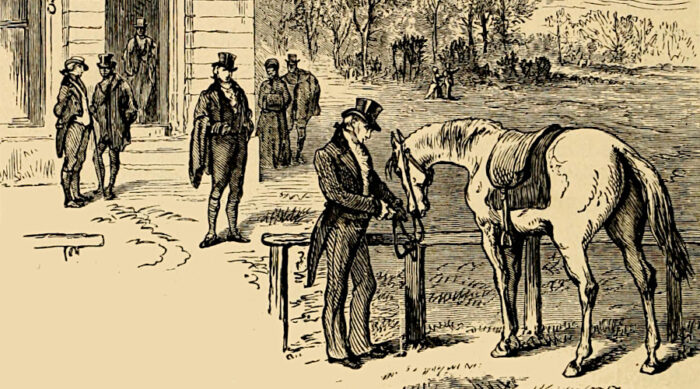
As we count down the days to the next Presidential inauguration, I wanted to go back and look at tales of Hill inaugurations past.
We start, as one so often does, with Thomas Jefferson. When he won the election in 1800, he was Vice President and lived on Capitol Hill in Conrad and McMunn’s boarding house. By all accounts, March 4, 1801 was a mild day, and it was an easy walk for him to the Capitol where he took the oath in the only appropriate room in the Capitol (or, probably anywhere in Washington) — the Senate floor. A reporter at the time wrote that “[h]is dress was, as usual, that of a plain citizen without any distinctive badge of office.” Jefferson then walked back to his boarding house. It was as stark a difference to today’s interplay of security and crowds that you could imagine.
Four years later, the status remained quo on the Hill, and, once again Jefferson took the oath on the Senate floor. The biggest difference was that he rode to the ceremony, and that he was dressed in silk stockings for the occasion.
By the time James Madison was inaugurated, there was a better venue to be had: the brand-new chamber of the House of Representatives. Considerably bigger than the Senate chamber – there being 4 times as many Representatives as Senators – it was exactly the kind of grand backdrop needed for such an occasion. Madison would be the only President sworn in this august hall twice when he took the oath there four years later.

His successor, James Monroe, would have greater difficulty finding an appropriate venue for his first inauguration. After all, the Capitol and other Federal buildings had been most thoroughly burned by the British some 2-1/2 years earlier.
While Congress was housed in a temporary building across the way, it was generally agreed that the rooms within were not up to snuff, and so the decision was made to hold the inauguration outside, for the first time since Washington was inaugurated on a balcony in 1789. Monroe would return inside, to the newly completed House chamber, for his second inauguration in 1821. While there might have been some interest in holding the ceremony outside again, this was scuppered by a snowstorm that ensured that everyone wanted to remain inside and warm. The inauguration was also held on March 5 instead of the 4th, for the simple reason that March 4 was a Sunday and thus considered inappropriate for such secular matters.
Four years later (less a day), John Quincy Adams would take the oath in the same place. He would use not the habitual bible to be sworn in, but a law book. He would also, after losing re-election, return to the place of his inauguration and ably represent Massachusetts in the House for 17 years until his death – in the House Chamber – in 1848.
Next week: We finally return outside.
